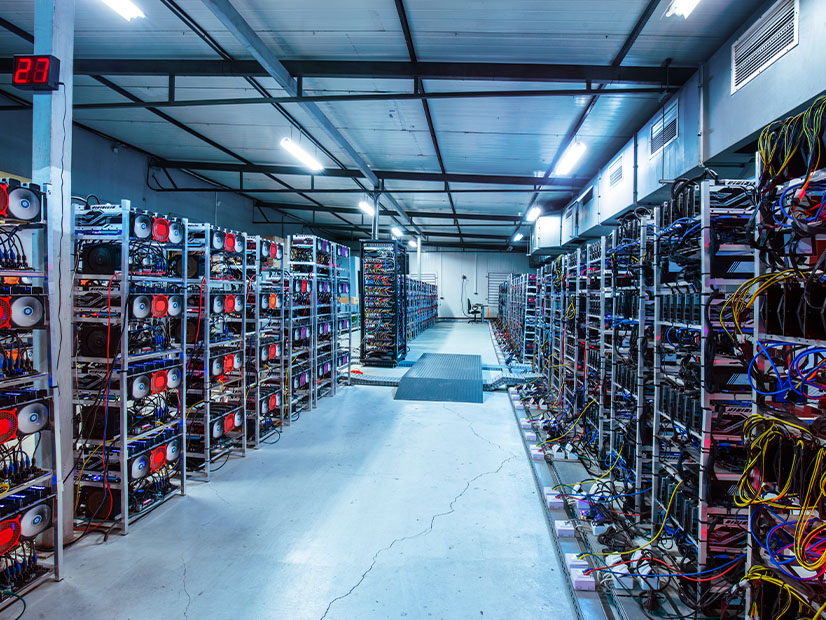
The changing nature of large loads on the power grid is already making system modeling more challenging, and the problem will only grow as the shift continues, according to presenters at a webinar hosted by NERC, the North American Transmission Forum and the Electric Power Research Institute.
Speaking at the first day of the annual Planning and Modeling Virtual Seminar on Wednesday, Parag Mitra, a senior technical leader at EPRI, said that while “we have been used to modeling large electric loads on our system for many years,” the kind of applications that make up those large loads has undergone a major shift in recent years.
Whereas traditionally large loads comprised factories, steel mills and other large industrial functions, their newer counterparts are mostly electronic in nature — for example, cryptocurrency mining operations, data centers, hydrogen electrolyzers and electric vehicle chargers. Mitra explained that modelers are still coming to terms with the fact that although these new applications are comparable to their industrial forebears in the size of demand, their performance on the grid can be very different.
“If you looked at a steel mill, you had a whole bunch of different motors that were running, and there were a bunch of different processes; whereas if you think of a data center, a large electrolyzer or a crypto-mining facility, all of these are large loads, but 90% of that [demand] is just a single type of process,” albeit spread across multiple machines, Mitra said. “The problem with that is, if one of those [electronic] devices behaves in a certain way, which may or may not be grid-friendly, you can anticipate that the entire facility is going to behave in that way.”
The concept of grid-friendly and grid-unfriendly behavior, as NERC Senior Engineer John Skeath explained later in the seminar, has previously been expressed primarily in relation to EV chargers. (See NERC, WECC Outline EV Charging Reliability Impacts.) Grid-friendly behavior contributes to the overall stability of the power grid by, for example, reducing power draw when system voltage drops; by contrast, grid-unfriendly applications aim to maintain a constant power level regardless of system voltage, which can hurt grid stability by raising current draw when voltage is low.
Mitra said that the large industrial loads of previous years were grid-friendly by nature; during a system disturbance, they would either trip offline or reduce their power draw without requiring any specific action. Electronic loads are different because the devices that make them up require a constant power draw, so their demand will not drop during a disturbance unless this behavior is programmed in.
Some facilities may also have backups like a local generator or uninterruptible power supply, which makes predicting their behavior during a disturbance even more difficult; if a facility switches to a backup generation source, when will its demand return to the grid?
“These devices may not trip offline; they might just move onto a local generation source or a local battery, but then they just disappear from the grid. So that can be a big issue if these loads are significantly sized,” Mitra said.
The challenge is compounded in systems with high levels of inverter-based resources (IBRs), including wind and solar generators, which present challenges of their own to system modelers, Mitra said. (See IBR Models Remain Persistent Challenge, Task Force Warns.) Because both the shift to IBRs and the growth in electronic loads are likely to continue, grids designed in the future without a better understanding of both sides of the equation will face greater risks to reliability.
Mitra said that building an understanding of these resources requires deep communication with manufacturers of the electronic equipment, who “have, for the most part, not been involved in this conversation.” Making these companies part of the discussion can help educate them about the burdens they place on the system, but also inform the modelers when their expectations are unrealistic.
“There will be places where … you want to ask loads to follow a certain type of ride-through requirement,” Mitra said. “It’s going to be important to understand what the limitations of the loads are. [If you ask] a load to do a certain thing, it’s not a generator; it might not be able to provide those benefits, simply because it was never designed to provide grid support; it was probably designed to serve another purpose. So [it’s] important to have the discussion … so that we know what type of solutions are required to solve all these issues.”


